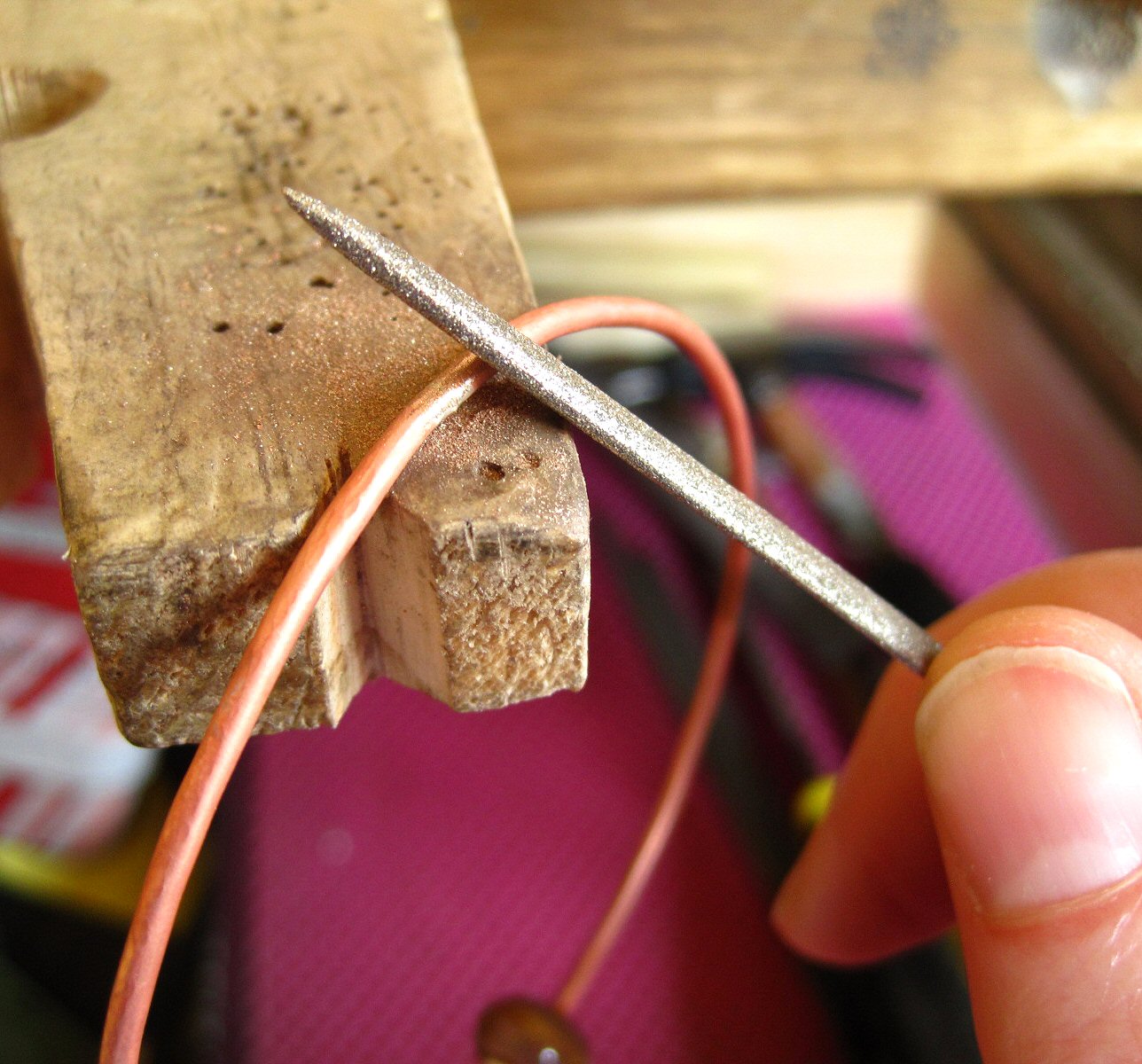I've been meaning to make some copper bangles with ceramic beads for a while now. I bought some pretty pinkish and green ceramic beads a while ago and they've sat in my bead box patiently waiting for their moment of glory. It has now arrived!
I decided to photograph how I made the bangles in the hope it will inspire someone/anyone to have a go. It's an easy project and as long as you use ceramic or lampwork beads or anything that has been kiln annealed you should find the beads behave themselves during soldering and don't explode.
The most important thing to consider before you start is to make sure your bead hole is big enough for the wire you are going to use. The holes in these pink ceramic beads were a little bit smaller than the 2mm wire I used so I made them bigger using a round needle file. I tried various methods for enlarging the hole - using a drill bit and ball burr with my Dremel but they didn't do a lot so I stuck with using the file.
Form and solder a bangle as normal - I made the diameter slightly bigger than the normal diameter for a medium sized bangle to allow for the bead. Shape and texture the bangle to the finish you want. If you hammer texture leave a gap over the the solder join as it will be easier to clean up the join after resoldering. Use a saw to cut through the solder join.
Use your bracelet mandrel and mallet to shape the bangle so there's some overlap at the ends - this creates some tension when you put the ends together and helps to make a better join for resoldering.
Open up the bangle sideways so you don't distort the shape and slide the bead onto one end. Slide the bead round so it sits opposite the join and manipulate the two ends so the join is tight. Soak in pickle for a few minutes. The beads are unaffected by the pickle.
I find the 2mm gauge wire is prone to moving as it's hard to get much tension to hold the join firmly together so I use T-pins to hold it in place. I put the honeycomb board on top of a fibreboard block as I can push the pins through the holes in the top block and then into the fibreboard underneath. This way is much less messy than just using the fibreboard block on it's own!
Keep the bead opposite the join and hanging over the edge of the soldering block at the back. Solder as normal keeping the flame near the join and away from the bead. Allow to cool naturally as quenching could cause the bead to crack. Once cool pickle and rinse.
File and sand the join taking care not to push the bangle out of shape.
Once the join is cleaned up you need to texture the area over the join to match the rest of the bangle. Use the bracelet mandrel but hold the bangle so the bead isn't in contact with the mandrel as you texture over the join. You'll probably find the bangle has gone out of round slightly as you've resoldered and cleaned up the join. You can use the mandrel to reshape the bangle but again keep the bead away from the mandrel. I hold the bangle at a higher point than normal on the mandrel so the bead isn't touching the mandrel and use my mallet to shape the bangle as I turn it to get it as round as I can. You can also tweak it with your fingers. Thicker gauge wire is likely to hold it's round shape much better.
Use a mallet and steel block to flatten the bangle keeping the bead hanging over the edge to prevent it breaking. This will also help to work harden the wire.
Use a pan scourer and washing up liquid to remove any grease from the bangle then oxidize in liver of sulphur. Clean up with wire wool. Tumble to polish and work harden. I tumbled these bangles for over an hour which didn't affect the ceramic beads at all.
A simple project but I hope it's proved interesting! My next quest is to find some larger hole ceramic beads to use with thicker gauge wire. A good excuse to go shopping!











No comments:
Post a Comment